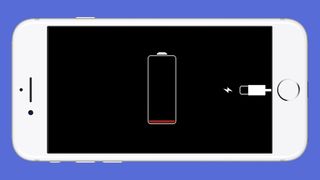What you need to do if your gadgets don't work on Christmas Day
Find a fix or get a repair

It's Christmas morning. You've rushed downstairs in your pajamas, torn open your lovingly wrapped gifts and gadgets – and something just doesn't work.
Chances are you're going to be on the receiving end of some neat new gadgets on Christmas Day, whether it's a Nintendo Switch for the kids, or a Fitbit tracker for all those New Year's resolutions you're definitely going to follow through on.
Hopefully, your shiny new gizmo will be working fine right out of the wrapping paper and give you many years of useful life.
However, manufacturing defects and shipping accidents do happen, so what do you do when your device refuses to operate as advertised? Take a deep breath, count to 10 and follow our guide to trying to repair your hardware or getting it sent back to headquarters.
Obviously, there are a host of devices out there – from smart TVs to tablets – so we can only provide you with some general tips and advice. Hopefully though, these pointers will help reduce your blood pressure and ensure you can still enjoy some of your Christmas Day.
Turn it on and off again

Sometimes the simplest solutions are the best, and it's worth trying the power button before you resort to anything rash – like throwing your new gadget out with the wrapping paper.
Is the device dead or just not powered up properly? Does it need to charge for a while before it'll actually do anything? The supplied instruction manual should tell you, so keep calm and go over the basics.
Get daily insight, inspiration and deals in your inbox
Get the hottest deals available in your inbox plus news, reviews, opinion, analysis and more from the TechRadar team.
It may sound obvious, but does the device need batteries? And if so have you fitted them? These may sound like basic checks, but you don't want to embarrass yourself at the returns desk of your local electronics store during the first week in January.
Check if there's some kind of hard reset or master reset that you can put your device through, which may solve your problems. Here's the support page for resetting your iPhone, for example. A quick web search should help you out if the instruction manual doesn't.
Head to the web

Chances are someone somewhere has previously had a problem with the gadget you're trying to troubleshoot, and posted about their experiences on the web. A quick online search should be enough to alert you to any known issues with the product you're trying to get working, and may even throw up a few solutions.
Is a software or firmware update required, for example? If the device powers up okay but doesn't work properly, it might be that you need to apply a patch from the manufacturer – your hardware will have been sitting on a warehouse shelf for a while, after all.
With a bit of sleuthing online you should be able to work out whether your issues are unique or widespread, and possibly find a fix from somewhere. If you're still having no luck, you might have to give up and return the item.
Check your rights

Once you've worked your way through all the troubleshooting steps you can find in the manual and on the web, it's time to think about taking it back where it came from for a refund or a replacement. In fact a lot of stores let you do this whether or not the device is actually faulty.
Look up the returns and cancellations policy for the store you bought the item from, rather than the manufacturer (though in some cases, you'll need to go to the manufacturer's official store). Here's Currys PC World. Here's Amazon. And here's Samsung. You can often send the gadget back via post or pop into a store.
As you can see from those links, if you've been sent a faulty product, you can usually get it repaired for free, or opt for a replacement or refund instead. You'll get guided through the process step by step, but make sure you keep all the packaging and documentation together with the gadget itself.
Unless you've bought your Christmas gifts from a guy selling gadgets out of the back of a van, it should come with a warranty, typically for a year – that guarantees that you'll get a working product, but it doesn't cover stuff like natural disasters or you dropping your new smartphone down a flight of stairs.
For example, here's the warranty if you've bought a Google Home or a Google Home Mini: Google guarantees the device "will be free from defects in materials and workmanship under normal use as described in the published product documentation for two years". If that's not the case, here's how to return your smart speaker if you bought it straight from the official Google Store.
Make some money

There might be times when you can't return a faulty item: maybe if someone else bought it for you, or if you've damaged it yourself, in which case the usual warranty terms typically don't apply, unless you've forked out for extra insurance.
In this case you can stick the item on eBay or Shpock or somewhere similar - you can often still get money for damaged goods from people who reckon they'll be able to fix it themselves or who want to use the parts for something else. Just make sure you're honest in the listing and with the buyer about what's wrong with the item.
With any luck, you won't need any of this advice, and all your Christmas gadgets will work perfectly. If not, you should be able to get a refund, replacement, or repair easily enough – though you might want to leave it a few days to avoid the Boxing Day queues.
This is also a good plan if you just end up with gifts you're likely never to use – though maybe check with your kind friend / relative to see if returning it is an option first.
- Check out all our seasonal shopping advice at TechRadar's ultimate Christmas guide
- Or jump straight to the best iPhone deals this Christmas

Dave is a freelance tech journalist who has been writing about gadgets, apps and the web for more than two decades. Based out of Stockport, England, on TechRadar you'll find him covering news, features and reviews, particularly for phones, tablets and wearables. Working to ensure our breaking news coverage is the best in the business over weekends, David also has bylines at Gizmodo, T3, PopSci and a few other places besides, as well as being many years editing the likes of PC Explorer and The Hardware Handbook.
